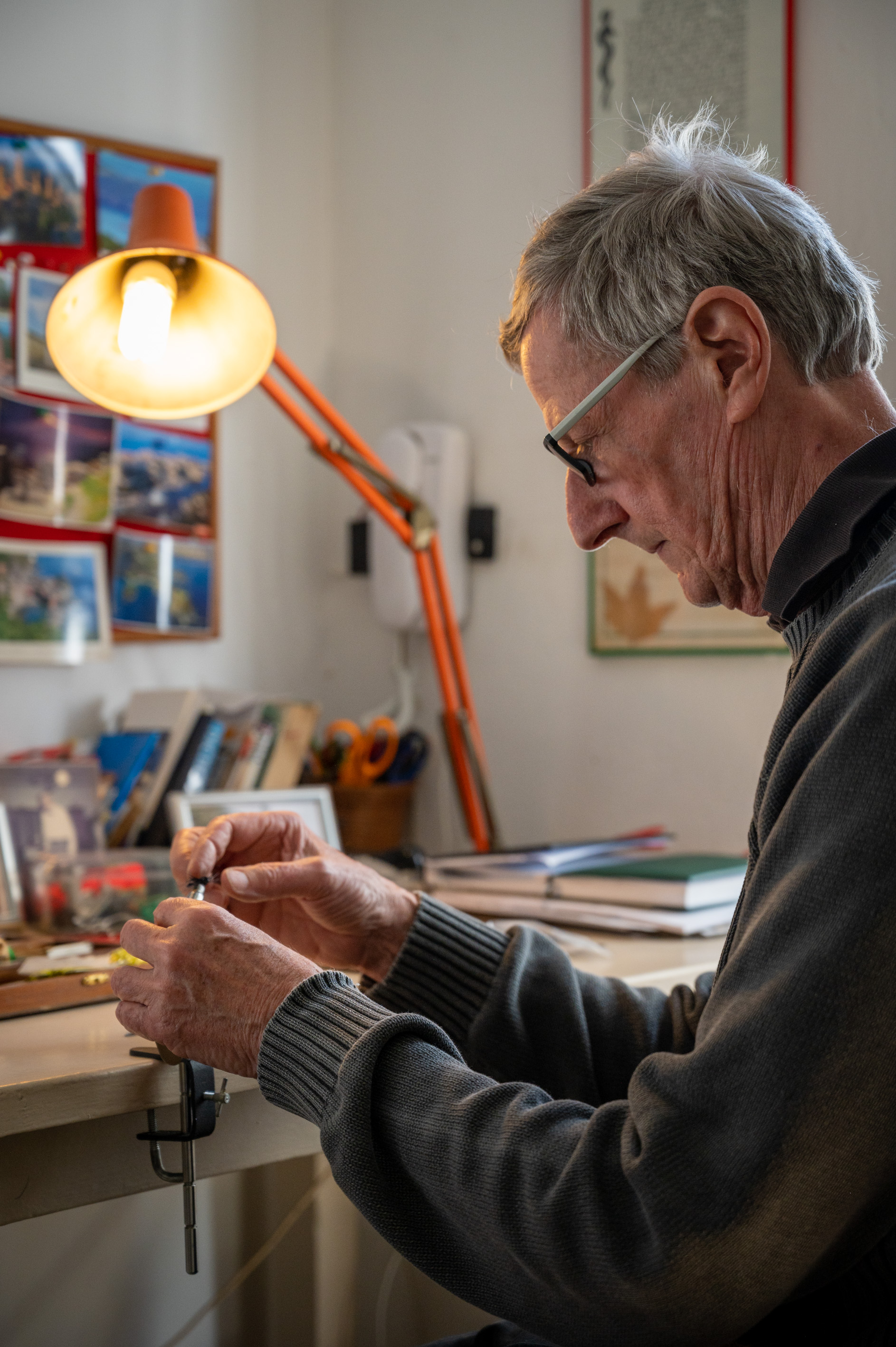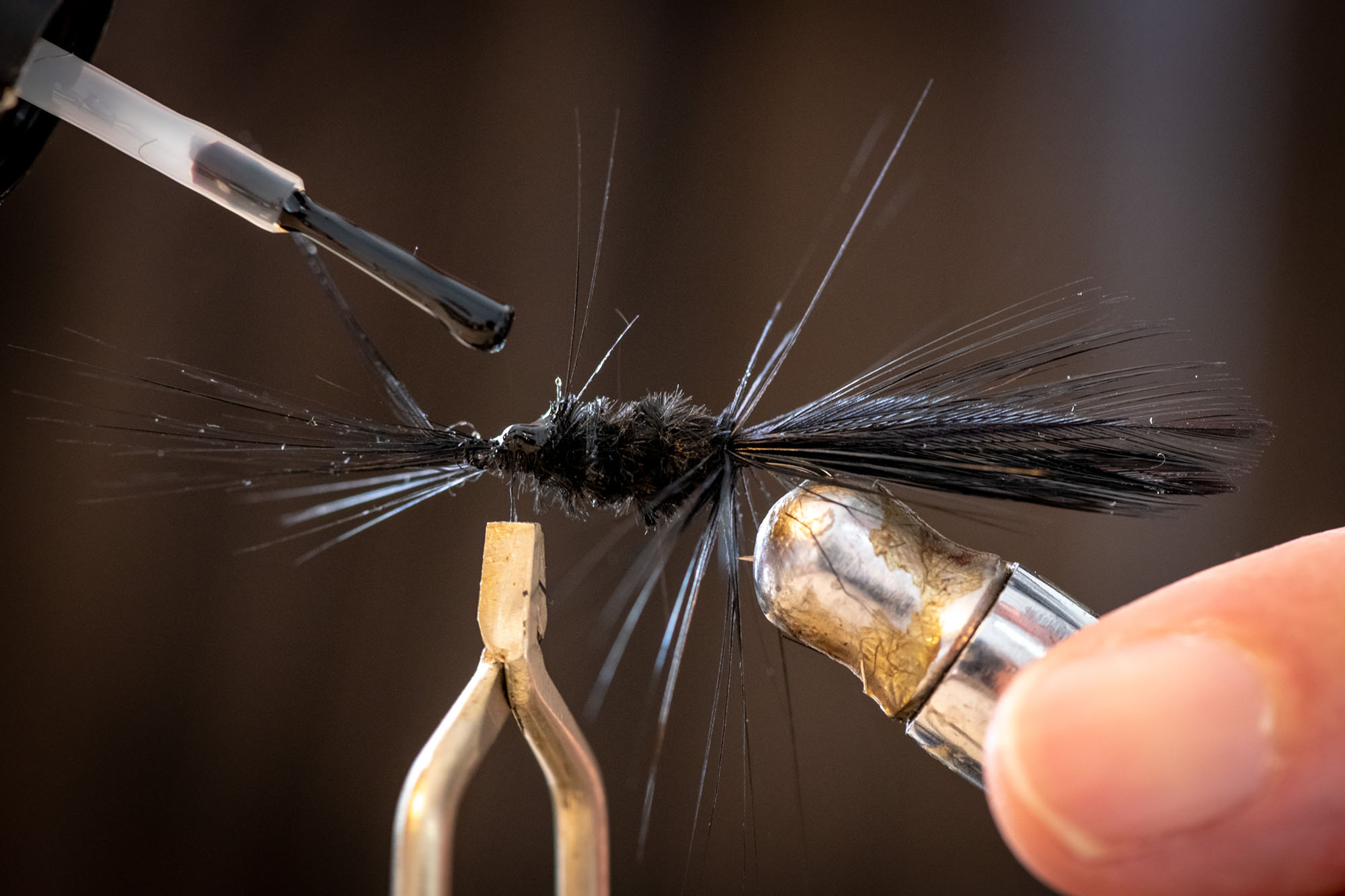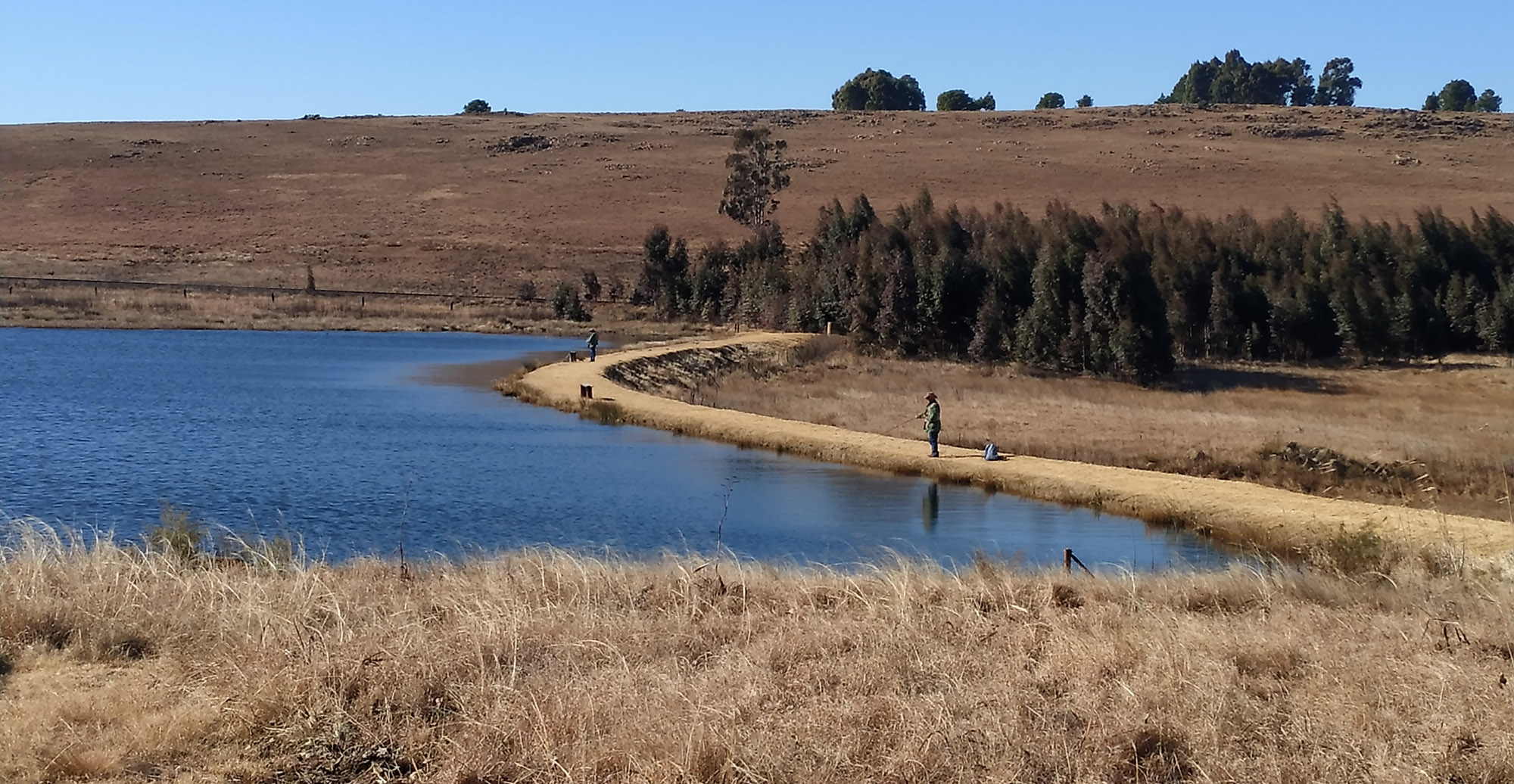STUFF OF STREAMS
The legendary story of the Colonel Potter will get you hooked on the history of fly-fishing in SA

For close to 50 years, it remained the Potter family’s best-kept secret. A secret forged from a twist of a chicken feather, a couple of turns of chenille yarn and a good measure of skill.
Added too are the two cock feathers that make the tail and if all is done right, it transforms into a deadly trout fly. It is called the Colonel Potter and its inventor, Dr Charles Potter, used it to take trophy fish in the streams that cut through eastern Mpumalanga.
When Potter and his two sons went on fishing trips across the country, their fly went too and it didn’t disappoint. It kept taking big fish, in the high mountain dams and rivers of the Eastern Cape, KwaZulu-Natal and the eastern Free State.
When Potter’s son Luke was 11 he won the South African Fly Fishing Association cup after he pulled a five-and-half-pound (about 2.5kg) trout from the Spekboom River in Mpumalanga. The big fish fell to a Colonel Potter.
But in January 2019 tragedy struck the Potter family when Luke, their eldest son, was killed in a terrorist attack in Nairobi, Kenya. Following the death of his son, Potter decided he would reveal the family secret, and the instructions for making the fly were released through the Dullstroom Fly Fishing Association. Anyone could now make their own.
By doing so, the Colonel Potter joined a catalogue of South African-invented flies that not only provide added help in catching fish, but also tell the story of fly-fishing in this country. And it is a story of ingenuity and of at least one eccentric who used his creation to prove a point.

Charles Potter ties a Colonel Potter trout fly. (Photo: Chris Collingridge)
It is debated when a fly rod and fly were first used in South Africa to trick a fish into biting into something it shouldn’t. Perhaps October 1801 when Scottish physician William Somerville is said to have caught a fish using an artificial lure in the Riet River, just north of what is now Sutherland in the Northern Cape.
The fish was most likely a yellowfish and the name of the fly he used to catch it has been lost to time. There is a good chance though that it was an import from the UK.
Most flies, until very recently, were imports. Although fly-fishing author Bill Hansford-Steele did find what is probably South Africa’s earliest locally designed fly. This was the Kom Gouw and it can’t legally be made today. The reason is that the feathers of the now protected kori bustard were used to make it.
Gradually more South African flies began to emerge, some based on the designs of overseas patterns. Then, in the 1960s and 1970s, a flurry of new South African flies appeared, with names like the Red Assed Bastard, or RAB, and Beam’s Woolly Worm.

Charles Potter at work. The demand for locally designed flies such as his Colonel Potter trout fly, spawned an industry. (Photo: Chris Collingridge)
“We were in the English school of fly-tying, but then we started to develop with people like John Beams, Mark Mackereth, Tony Biggs and myself, our own style of flies, which slowly but surely kind of replaced a lot of the traditional English flies,” explains author and well-known fly-fisherman Tom Sutcliffe.
One of these flies was Sutcliffe’s DDD or Duckworth’s Dargle Delight. A fly that in part was named after Sutcliffe’s friend Bill Duckworth who fished it on several dams in the Dargle area of KwaZulu-Natal. The traditional DDD is tied with klipspringer hair and is arguably South Africa’s best-known dry fly, a type designed to float, mimicking an insect that has landed on the water.
The demand for locally designed flies spawned an industry. Commercial fly-tying companies sprung up, feeding into the fly-fishing industry and adding to a growing niche economy that is difficult to quantify.
A 2014 study by Cobus Venter, of the Bureau of Economic Research based at Stellenbosch University, estimated that trout fishing added R1.8-billion annually to South Africa’s GDP and employed about 13,000 people.
The strangest fly
But there is more to fly-fishing than just catching trout, as Peter Arderne, the northern region secretary of the Federation of South African Flyfishers (Fosaf), stresses.

The instructions for making the Colonel Potter trout fly were released through the Dullstroom Fly Fishers Association following a family tragedy. (Photo: Chris Collingridge)
“The trouble is that there are various segments. You have trout and yellowfish, then there is a fair amount of saltwater fly-fishing, particularly in Durban harbour and on the Garden Route. So, to put a figure to it will be very difficult.” It is, however, an industry that has fuelled the growth of towns such as Dullstroom and Rhodes in the Eastern Cape.
Probably the strangest fly to emerge from a South African fly-tying vice was made not to catch fish. The Mountain Swallow is a pretty fly constructed with orange- and blue-dyed feathers, gold tinsel and wool. It resembles not an insect or minnow or anything else that trout eat.
And that is how its inventor, Tom Bowker, wanted it.
Bowker was a well-known fly-fishing author in the early part of the 20th century who wrote under the name Kingfisher. At the time there was a heated debate in fly-fishing circles: on one side were the fishermen who argued that fly-fishing was all about using the right fly that tricked a trout into taking the hook. Others like Kingfisher disagreed. The trout was tricked not by the fly but through the skill of the fisherman. The fly needed to be retrieved correctly through the water so as to imitate the insect that the trout happened to be feeding on.
To prove his hypothesis once and for all, Kingfisher embarked on an experiment. He designed the Mountain Swallow and for a season that was all he fished with. He kept meticulous notes, and soon declared that he was right.
Kingfisher had caught as many fish on his gaudy fly compared with previous seasons when he used more popular, natural-looking flies.
These synthetics include craft fur, a material that has made a comeback from the Seventies and Eighties when it was used to make furry dashboards.
Argument won, or so Kingfisher thought. Two decades later and the Mountain Swallow became a bestselling fly with a killer reputation. The fact that many of those using the fly and catching fish were amateurs with little appreciation for proper retrieval, killed Kingfisher’s hypothesis.
The Mountain Swallow is not alone, there are other flies out there that look like … well, nothing found lurking in local streams and dams. And they too catch fish.
“So, you can almost think of fly-tying in terms of fashion. There were times when men would be wearing suits with bowler hats and umbrellas. And now you find one in 100 wearing them. Now it is sweatshirts and jeans and this is very much the same as fly-tying. And the big question you have to ask is, does it represent an improvement in the catch rate of these flies. There are so many factors that influence this that it is hard to answer,” says Sutcliffe.
Flies and furry dashboards
At the Village Angler in Dullstroom, a town at the epicentre of the Mpumalanga trout belt, John Hunter has watched fads in fishing flies come and go. And it all comes at an anxious time when the fly-fishing community awaits news on the government’s appeal against a court judgment that Fosaf won in September 2021. The victory prevented the government from seeking tighter control of the trout industry through a series of permits.

Making a Colonel Potter trout fly is long and intricate work. (Photo: Chris Collingridge)
If introduced, many believe it will have a negative effect on the trout economy, even trickling down to traders like Hunter who supply fly-fishing stock to fishermen.
On a board outside Hunter’s family shop is usually a list of flies that are proving successful that day. Inside, boxes display contain a new generation of South African flies – there is the Papa Roach, the Bokka and Hunter’s own designed fly, the Dingemalery.
“What I have seen over the years have been synthetic materials coming on to the market, and the flies have become bigger too,” he says.
These synthetics include craft fur, a material that has made a comeback from the Seventies and Eighties when it was used to make furry dashboards.
One fly that is not available is the Mountain Swallow; it is a casualty of time. To most fishermen, the Colonel Potter is still an unknown, although Hunter did use one to catch a 3kg brown trout in Janson’s Dam just outside Dullstroom.
But, ask Hunter and he will teach you how to make one. On a quiet day at the shop, he might even tie one for you. The proceeds from the sale of the fly go to charity.
Whether the Colonel Potter will find a permanent place in fly boxes across the land, alongside some of those other famous South African flies, only time will tell. DM
This story first appeared in our weekly Daily Maverick 168 newspaper, which is available countrywide for R25.
[hearken id=”daily-maverick/9419″]






















 Become an Insider
Become an Insider
Comments - Please login in order to comment.